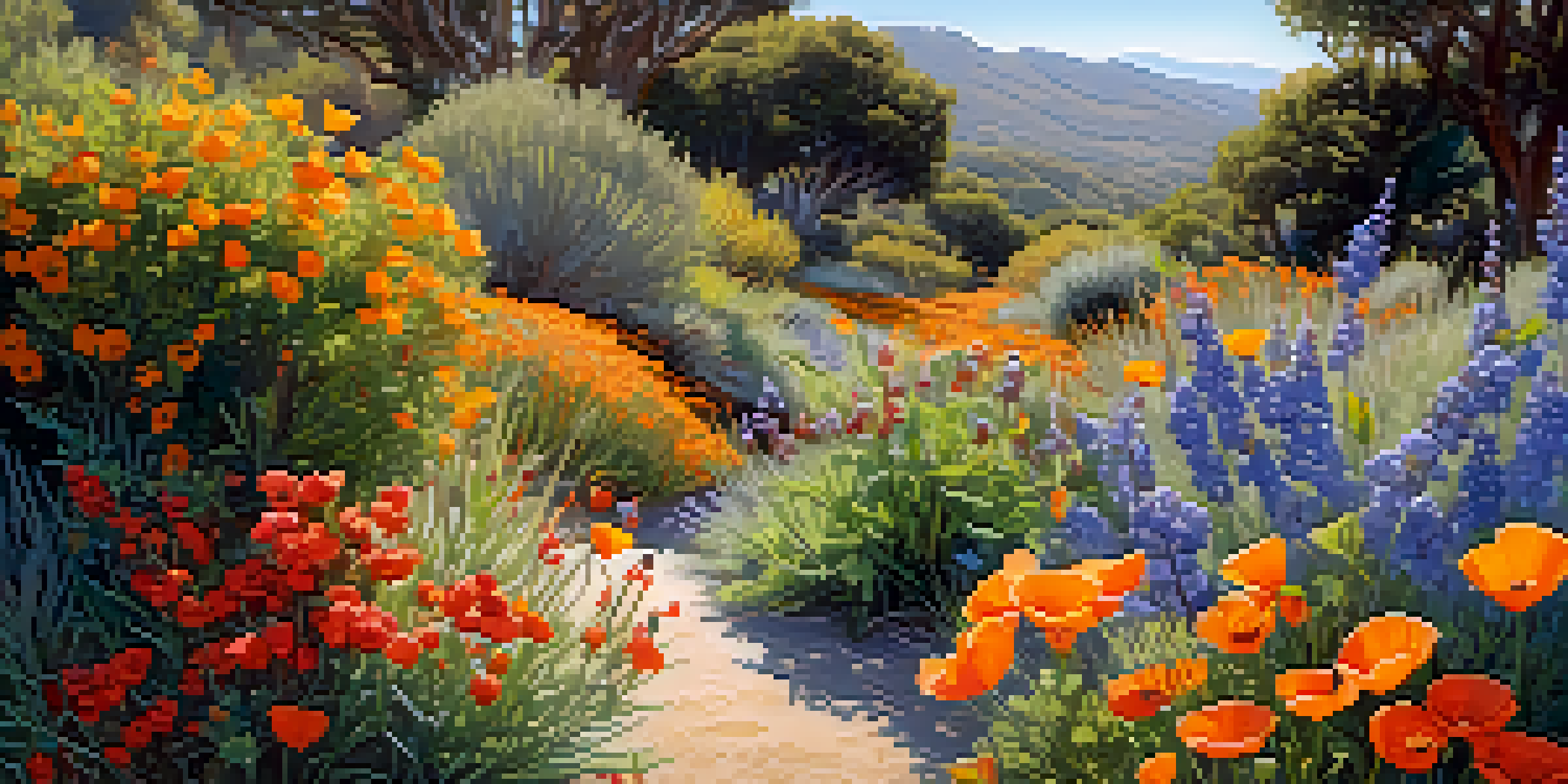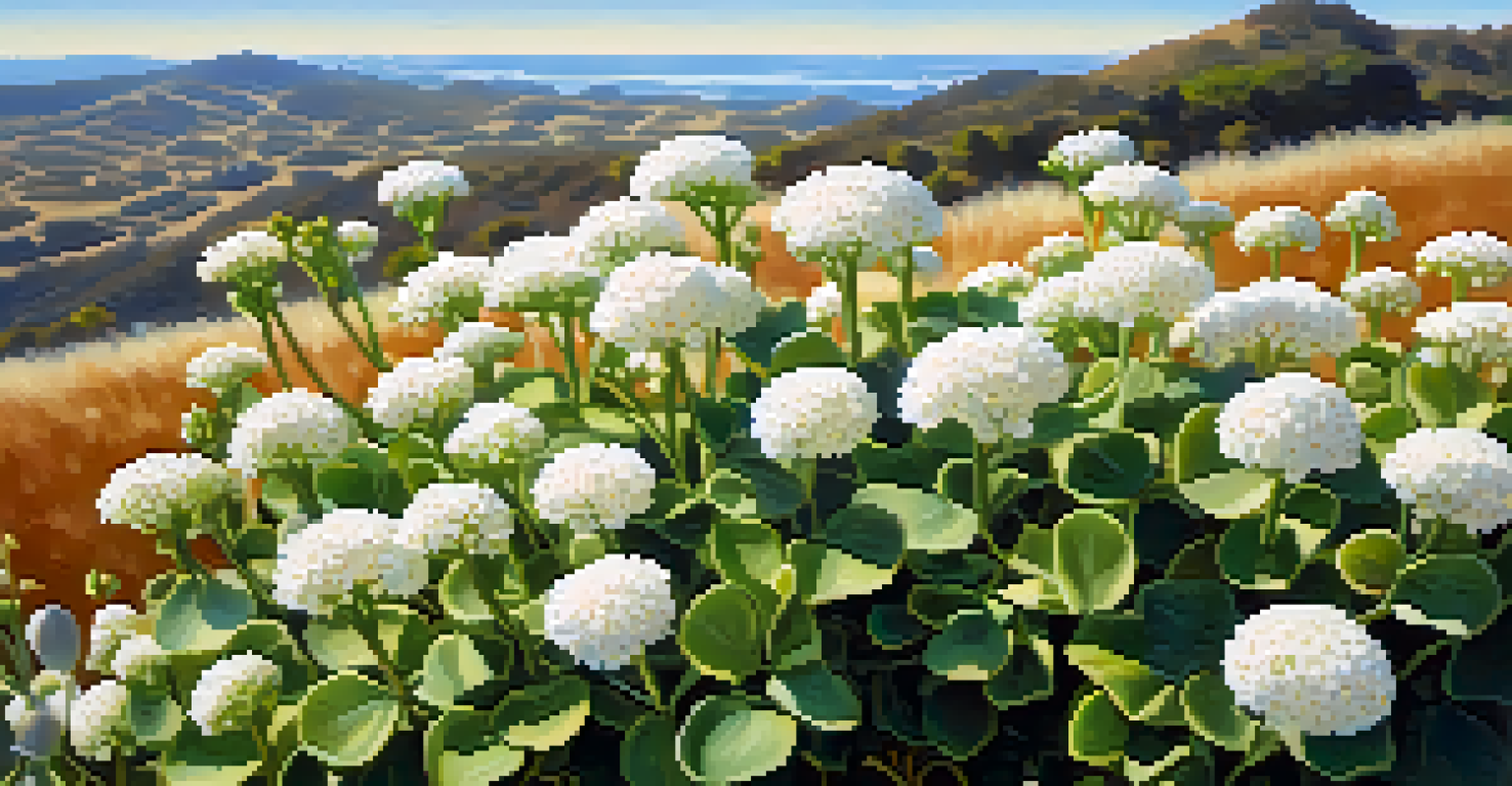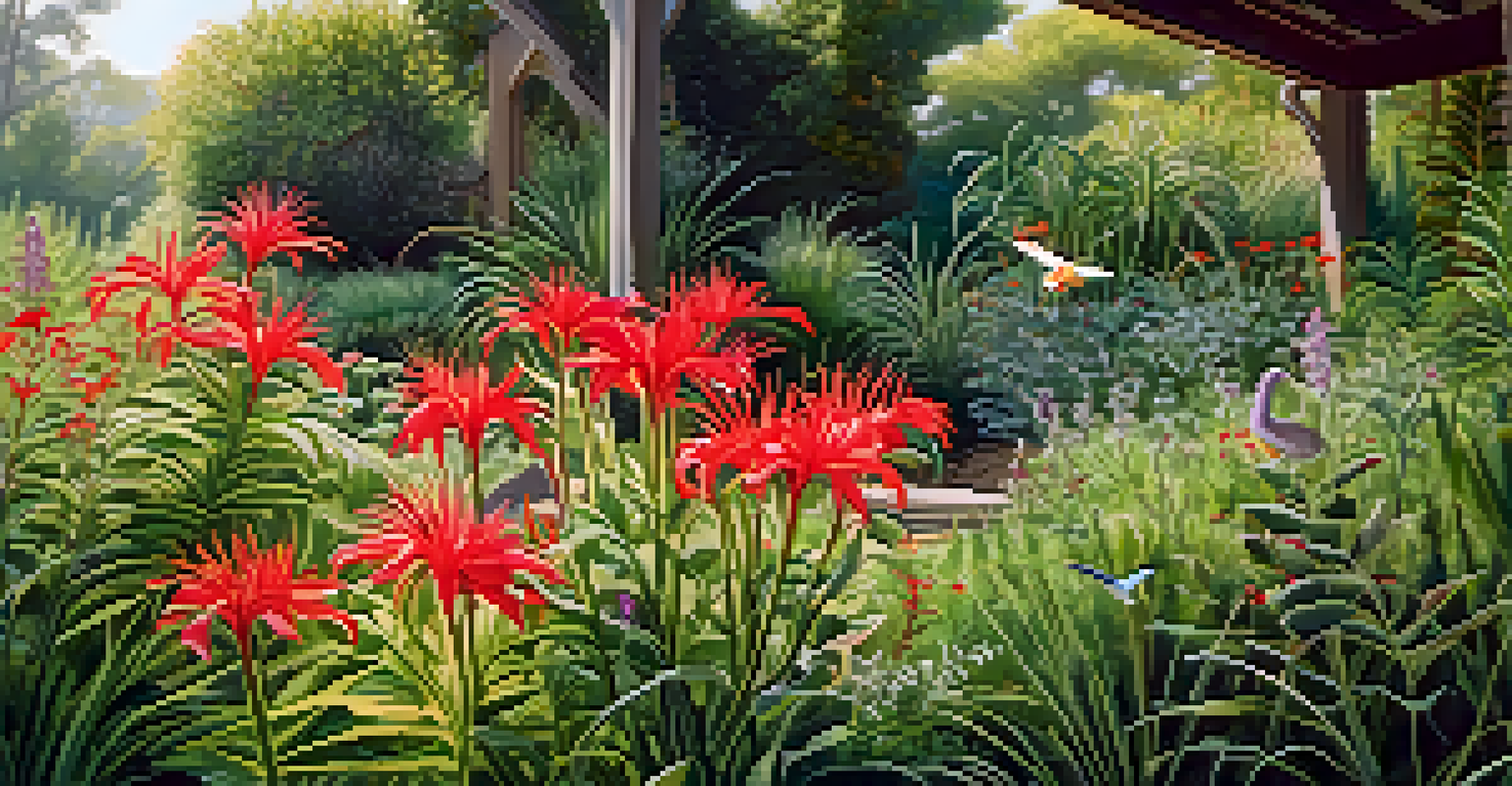Native Plants for Sustainable Gardening in Santa Barbara

Why Choose Native Plants for Your Garden?
Native plants are well-adapted to the local climate, making them easier to grow and maintain. They require less water and fewer chemicals, which is a win-win for both your garden and the environment. By choosing native species, you also support local wildlife, particularly pollinators like bees and butterflies, creating a thriving ecosystem right in your backyard.
Native plants are the backbone of a healthy ecosystem, providing food and habitat for wildlife while requiring less water and maintenance than non-natives.
For example, the California poppy is not just a beautiful flower; it’s a drought-tolerant plant that provides food for local insects. When you plant native flora, you’re essentially inviting nature into your garden, fostering biodiversity and resilience. This approach aligns perfectly with sustainable gardening practices, which prioritize ecological health.
Additionally, native plants can help reduce soil erosion and improve soil quality over time. They often have deep root systems that stabilize the soil, making them ideal for gardens in hilly areas of Santa Barbara. By incorporating native plants, you're not just beautifying your space, but also contributing to the overall health of the environment.
Top Native Plants for Santa Barbara Gardens
Santa Barbara is home to a variety of native plants that can suit different garden styles. Some popular options include the coastal sage scrub, which offers aromatic herbs and vibrant flowers, and the manzanita, known for its stunning bark and resilience. Each of these plants contributes uniquely to the local ecosystem while providing aesthetic value to your garden.

Consider adding California lilac (Ceanothus) to your landscape. This beautiful shrub boasts clusters of blue flowers in the spring, attracting pollinators and providing a lovely contrast to the green foliage. Another great choice is the toyon, which not only produces bright red berries in the winter but also provides habitat for birds and other wildlife.
Benefits of Native Plants
Native plants are easier to grow, require less water, and support local wildlife, enhancing both your garden and the environment.
By selecting a variety of native plants, you can create a garden that blooms year-round, enhances your outdoor space, and offers food and shelter for local creatures. This diversity not only makes for a visually appealing garden but also ensures that your green space remains resilient against pests and diseases common in non-native species.
Creating the Right Environment for Native Plants
To successfully grow native plants, it’s important to mimic their natural environment as closely as possible. This means understanding the sunlight, soil, and water needs of each species you choose. Most native plants thrive in well-drained soils and prefer native mulch over synthetic options to retain moisture and suppress weeds.
Gardening with native plants is not just about aesthetics; it’s about creating an environment that supports local wildlife and promotes biodiversity.
For instance, if you're planting in a sunny spot, consider species like the California fuchsia, which flourishes with minimal water. Conversely, if your area has partial shade, the western sword fern might be a better fit. By observing your garden's conditions, you can create a tailored environment that allows your native plants to thrive.
Furthermore, consider group planting; arranging plants with similar needs together can enhance growth and reduce maintenance. This approach not only simplifies your gardening routine but also creates a more cohesive and visually appealing garden design. Remember, the goal is to create a harmonious balance where native plants can flourish naturally.
Water Conservation with Native Plants
One of the most significant benefits of incorporating native plants is their ability to conserve water. These plants have evolved to survive in the local climate, enduring periods of drought without the need for excessive irrigation. This makes them an ideal choice for sustainable gardening, especially in areas like Santa Barbara where water conservation is crucial.
For example, plants like the desert willow not only require minimal watering but also add a stunning aesthetic with their beautiful, trumpet-shaped flowers. By reducing the amount of water needed for your garden, you’re not only saving on your water bill but also contributing to the larger goal of water sustainability in your community.
Support for Local Wildlife
Planting native species creates habitats that provide food and shelter for pollinators and other local wildlife.
Additionally, grouping your plants based on their water needs further enhances conservation efforts. This technique, known as hydrozoning, can help ensure that each plant receives the appropriate amount of water while minimizing waste. It’s a simple yet effective way to create a garden that’s both beautiful and environmentally responsible.
Supporting Local Wildlife with Native Plants
Native plants play a crucial role in supporting local wildlife, particularly pollinators. By planting species that are native to Santa Barbara, you create a habitat that provides food and shelter for bees, butterflies, and birds. For instance, the fragrant sage not only attracts pollinators but also offers nectar-rich blooms that enhance the biodiversity of your garden.
Moreover, native plants often have a complex web of relationships with local wildlife. For example, the dense foliage of the California buckwheat provides nesting sites for various birds, while its flowers are a food source for many insects. By creating a diverse environment, you’re fostering a healthy ecosystem that benefits both your garden and the local wildlife.
Incorporating native plants into your garden encourages a symbiotic relationship where both the plants and wildlife thrive. As you create your sustainable garden, take some time to observe and appreciate the wildlife that visits, knowing that your choices are making a positive impact on the environment.
The Aesthetic Appeal of Native Plants
Beyond their environmental benefits, native plants bring unique beauty and character to your garden. With a variety of colors, shapes, and textures, they can create stunning visuals that change with the seasons. For example, the bright blooms of the California poppy in spring can transform your landscape into a vibrant tapestry of color.
Incorporating native plants also allows you to celebrate the natural beauty of Santa Barbara’s unique ecosystems. By showcasing local flora, you create a garden that reflects the rich biodiversity of the region. This not only enhances your outdoor space but also connects you more closely to your local environment.
Aesthetic and Sustainable Gardening
Native plants offer unique beauty, seasonal visual interest, and lower maintenance needs, making them ideal for sustainable gardening.
Moreover, native plants often require less maintenance than non-native species, allowing you to enjoy the beauty of your garden without the stress of constant upkeep. This ease of care means more time for you to relax and enjoy your outdoor space, appreciating the natural beauty that surrounds you.
Getting Started with Native Gardening
If you’re ready to dive into native gardening, the first step is to research the native plants that thrive in Santa Barbara. Local nurseries often offer a variety of native species, and many provide helpful resources to guide you in your selections. Additionally, online organizations focused on native plants can offer insights into the best choices for your specific garden conditions.
Once you’ve chosen your plants, start small. It can be tempting to transform your entire garden at once, but beginning with a few select species allows you to learn and adapt your gardening techniques. As you gain confidence, you can gradually expand your native plant collection, creating a more diverse and sustainable garden over time.

Finally, don’t hesitate to connect with local gardening communities or workshops focused on native plants. Engaging with others who share your interest can provide valuable tips, inspiration, and support as you embark on your sustainable gardening journey. Remember, every little step you take contributes to a healthier environment and a more beautiful garden.